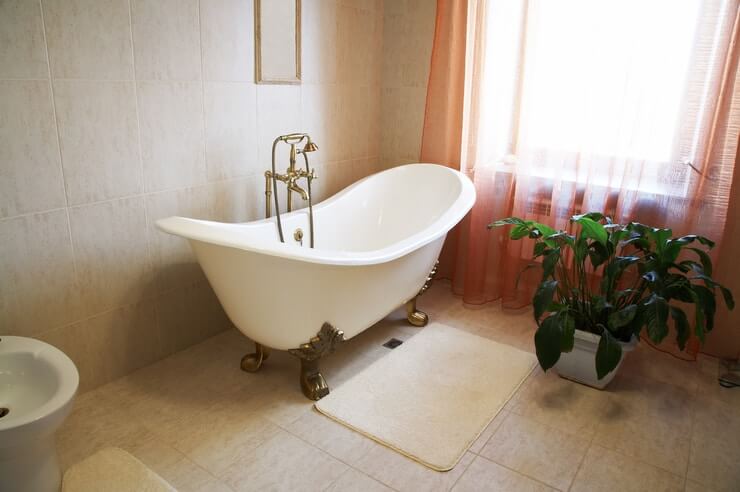When building the bathroom of your dreams, small details can make a big difference. Something simple as a bathtub faucet can have drastic effects on the style and functionality of your bathroom.
The location of your plumbing and the type of tub you own are significant factors in deciding the height and placement of your faucet. There are many options available to you, and sometimes it can be challenging to determine what faucet placement will work best.
This article will help you make this decision and will cover the standard faucet height, how to choose the best placement, along with installation tips and special considerations.

Standard Bathtub Faucet and Spout Height
The standard faucet height for a bathtub faucet is between 12 to 18 inches above the rim of the bathtub. However, this standard height is just a recommendation.
The spout should be placed at 4 inches above the bathtub’s rim to comply with the building codes that require that there be a 2 inches air gap above the overflow rim of the tub.
Obviously, putting your faucet four feet above your bathtub would be foolish and effectively give you a showerhead without water pressure along with a soaking wet floor. Also, placing your faucet too low can make it more difficult to access or can conflict with building codes.
Placing your faucet within the standard 12 to 18 inch height is recommended not just because it is stylish and convenient to access but because it is usually around this height that your faucet can easily connect to a preexisting water supply.
Where Should a Tub Faucet Be Placed?
Your faucet or spout placement will not be entirely up to you and is determined by a few factors. For example, a freestanding tub gives you the option of placing the faucet on any side of the tub as long as it can connect to the plumbing. On the other hand, an alcove tub is surrounded by walls forcing you to put the faucet at the far end of the tub so you can easily get in and out of the tub.
Besides the type of bathtub, you have the other factor that heavily impacts faucet placement is the plumbing. If you are building a home from the ground up, you can install plumbing wherever you want your bathtub and faucet to be. But for most of us, we have to work with preexisting plumbing, which will determine where you can place your faucet.
There are ways around these issues, but they are by no means cost-effective. You can buy a new bathtub to get the spout placement you desire. You can also move and reinstall plumbing to suit your placement needs. But this can add up to a lot of work and money just to place a faucet where you want it. In most cases, you’re best off working around what you already have.
Things to Consider When Installing a Bathtub Faucet
Installation Tips
- The higher you place your faucet, the more likely it will splash, soaking your bathroom floor.
- Make sure you choose the right faucet that best suits your style needs and bathtub. Depending on your bathtubs set up, you may have to choose a faucet that’s similar to the one you already have.
- You should shut off your water through a bathroom cut-off or turn off the water supply for the entire house before installing a faucet.
- A basin wrench, which is a specialized tool used by plumbers, may be required to install some faucets.
- Be mindful of the location of your plumbing before you decide on a faucet’s placement.
- Don’t forget to use a high-quality waterproof silicone-based caulking around your faucet to ensure you have a watertight seal.
- Save any instructions, spare parts, or tools that came with your faucet in case they are needed in the future.
- After installing a faucet or doing any type of plumbing work, you should run your water and check for leaks.

